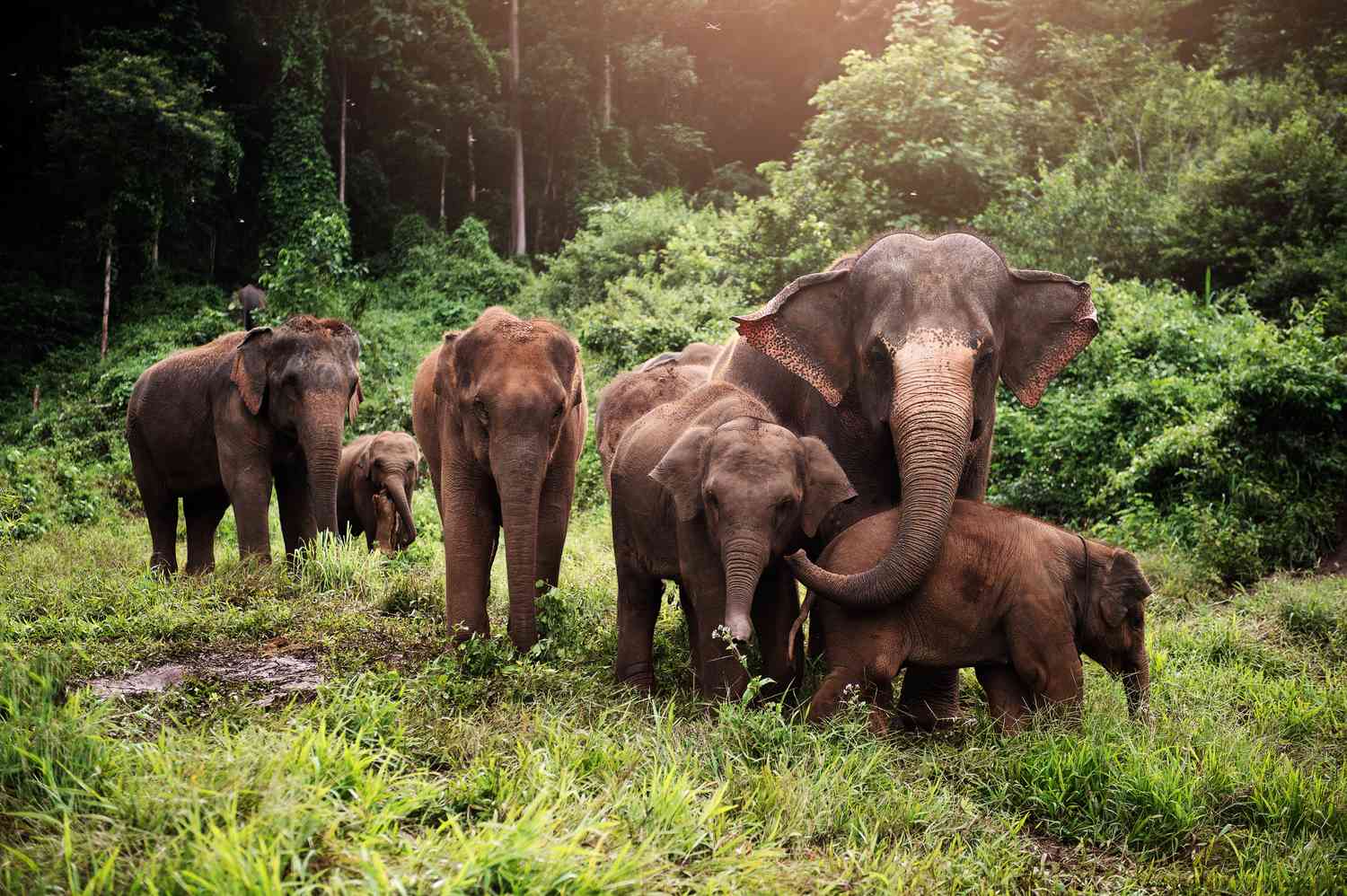Asian elephant habitat loss coincides with colonial-era use of land and subsequent agricultural intensification, scientists say.
The largest living land animal in Asia, Asian elephants once roamed the grasslands and rainforests that spanned the continent. Prior to the 1700s, habitats for the now-endangered pachyderms were relatively stable. But now, a new study looking at land-use data from the years 850 to 2015 reveals a bleak situation in which the researchers estimate more than 64% of historic suitable elephant habitat across Asia has been lost.
“Colonial-era land-use practices in Asia, including timber extraction, farming and agriculture, cut the average habitat patch size more than 80%, from 99,000 to 16,000 square kilometers,” explains the University of California at San Diego (UCSD). Noting the loss of traditional systems of land management, the university continues, “Habitats suitable for Asian elephants (Elephas maximus) across Asia have decreased by over 64%—equating to 3.3 million square kilometers [1,274,137 square miles] of land—since the year 1700.”
Shermin de Silva, a UCSD faculty member who led the research team, and his colleagues looked at the change in the spread and fragmentation of elephant ecosystems in 13 countries between 850 and 2015 and calculated the change in suitable habitat from 1700 to 2015.
Their findings suggest that mainland China, India, Bangladesh, Thailand, Vietnam, and Sumatra have each lost more than half of their suitable elephant habitat range, with the greatest declines in China (around 94% of suitable habitat lost) and India (around 86% of suitable habitat lost).
The global space available for Asian elephant habitats has been in rapid decline since the 1700s.
Report co-authors
With the remaining elephant populations not having adequate habitat, there is increased potential for human-elephant conflict—a problem we see with wildlife across the globe.
“In the 1600s and 1700s there is evidence of a dramatic change in land use, not just in Asia, but globally,” said de Silva, who is also the founder of the nonprofit Trunks & Leaves. “Around the world we see a really dramatic transformation that has consequences that persist even to this day.”
The authors conclude that it is important to consider the history of the landscape to understand the distribution of elephants in Asia and to help develop more sustainable land-use and conservation strategies to meet the needs of both elephants and people.
“We used present-day locations where we know there are elephants, together with the corresponding environmental features based on the LUH data sets, to infer where similar habitats existed in the past,” said de Silva. “In order for us to build a more just and sustainable society, we have to understand the history of how we got here. This study is one step toward that understanding.”
The study “Land-use change is associated with multi-century loss of elephant ecosystems in Asia,” was published n Scientific Reports.

